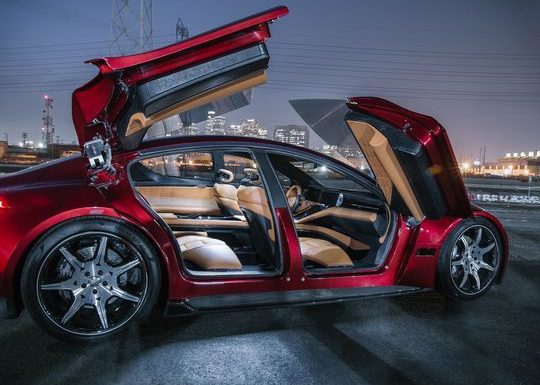
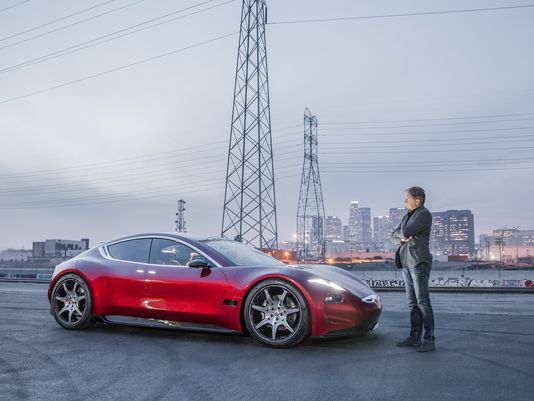
Tesla could be facing some intense new competition. Fisker, Inc. recently debuted their electric eMotion. Starting at $129,900, the eMotion seeks to roll out in 2019. Wochit-All
If a $100,000 tech-packed, trend-setting Tesla Model S sedan isn’t quite cool enough for you, Henrik Fisker requests a moment of your time.
The heralded automobile designer of the iconic BMW Z8 and a gaggle of Aston Martins is back in the car game with the electric Fisker EMotion, which he plans to unveil Tuesday at the 2018 Consumer Electronics Show in Las Vegas.
Remember Fisker? Backed by a federal loan, he launched his own car company making a sleek plug-in hybrid sedan, the Karma, about the time Tesla was trying to get its Model S sedan off the ground. But production stopped in 2013 after battery woes and financial issues led to bankruptcy.
This time, Fisker’s rakish new sedan boasts upward-opening gullwing-style doors for both front- and and rear-seat passengers, a modernist interior, 400-mile battery range and a $129,000 base price. The EMotion also promises to come with sensors critical to self-driving.
“I pushed myself to move car design forward without losing what we love about the automotive shape,” Fisker tells USA TODAY while speaking by phone from the backseat of a sapphire-red EMotion as it was being set up in Las Vegas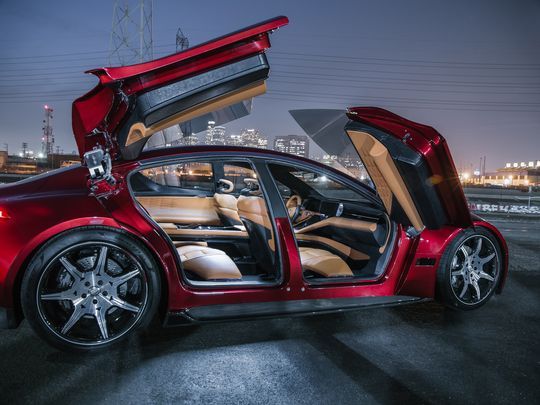 Fisker EMotion features unique doors that pivot up and out of the way, allowing for easier ingress and egress into the 400-mile range EV
Fisker EMotion features unique doors that pivot up and out of the way, allowing for easier ingress and egress into the 400-mile range EV
Among the EMotion’s specs: all-wheel drive, massive 24-inch Pirelli tires, five Quanergy sensors for autonomous driving, carbon fiber and aluminum chassis construction and a four-zone electrically adjustable tinted roof. The car is 16 feet long and 5 feet high, or roughly the same as a Tesla Model S.
Although the EMotion initially will come with traditional lithium-ion batteries, Fisker says he is further looking to distinguish his product through the development of proprietary flexible solid-state battery technology, which would improve range, increase safety and speed up recharging times.
“Consumers want choices when it comes to cars,” he says. “We believe there is plenty of room for newcomers, especially in the EV space.”
That’s true — and it could also prove a problem for Fisker.
CES, in particular, has morphed into a de facto auto show in recent years, providing a tech-centric showcase for vehicles from both traditional companies such as Mercedes-Benz and start-ups such as Faraday Future.
A growing number of companies from General Motors to Porsche are promising a host ofnewelectric models in the coming years, essentially capitalizing on the excitement generated by Tesla.
“If I could buy the EMotion tomorrow, there would be some novelty to it,” says Karl Brauer, executive publisher at Cox Automotive. “But in the next year or two, Mercedes, Audi and others will all have things like this. And they’ve also got a brand I recognize, servicing centers and dealer support.”
Brauer allows that automotive history proves there is always room for a few niche companies catering to exclusive clients, be that Bugatti or Ferrari. “There are people who don’t want what their neighbors have, and Fisker is counting on that,” he says. “But how many of them exist, I don’t know.”
Fredric Lambert, editor of EV site Electrek, is blunt. “Henrik never misses in terms of design,” he says. “But until we see a production car and a clear path to production itself, many will see this vehicle as vaporware.”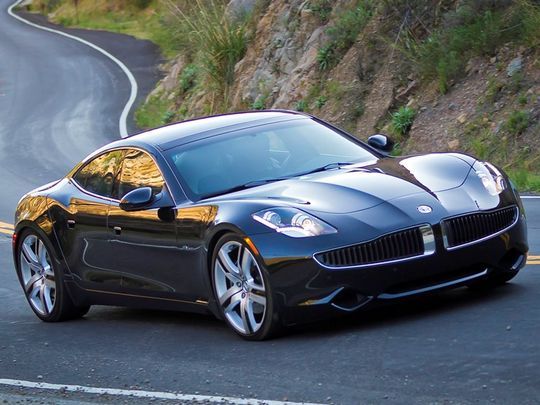
The 2011 Fisker Karma, Henrik Fisker’s first automotive venture, was a dramatic plug-in hybrid. But battery and financial problems eventually caused the company to go bankrupt. It has been revived by a Chinese company
Fisker says the car should arrive by the end of 2019, and partnership announcements related to the car’s eventual production somewhere in the U.S. will come later this year.
“Everyone agrees electric cars are coming and will soon be a major share of the market,” he says. “But the question is how big and how fast and who will the early winners be.”
Fisker’s Karma had the bad kind
Fisker was arguably too early with the Karma, a striking machine that found early buyers in Al Gore and Leonardo DiCaprio. Ultimately, its assets were bought in 2014 for $150 million at a bankruptcy auction by a Chinese auto parts company, which has relaunched the plug-in hybrid as the Karma Revero.
But with huge leaps in battery technology and consumer acceptance of EVs, Fisker feels the time is right for the EMotion. He says that once the car goes into production, the company will be profitable selling fewer than 5,000 of them a year (Tesla annually builds around 100,000 of its pricey sedans and Model X SUVs and is having some production issues meeting projections for its first mainstream electric car, the $35,000 Model 3).
Fisker also says that he will be producing an autonomous shuttle, the Fisker Orbit, in partnership with China’s Hakim Unique Group, and will develop an entry-level EV, akin to the Model 3, that he hopes will sell to the ambitious tune of 300,000 units a year.
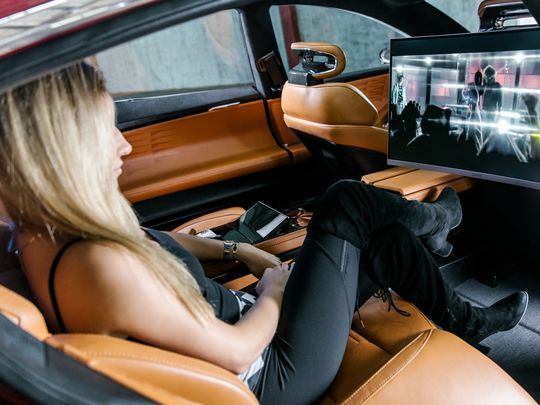 Rear seat passengers in the EMotion electric sedan get the latest in entertainment systems, including an optional 27-inch curved monitor in the “Chaffeur Edition” model.
Rear seat passengers in the EMotion electric sedan get the latest in entertainment systems, including an optional 27-inch curved monitor in the “Chaffeur Edition” model.
But for the moment, all eyes and company dollars are on the debut product being revealed at CES.
The EMotion’s biggest talking points are its range and looks. The former is courtesy of LG Chem batteries capable of more than 400 miles and of being recharged to 127 miles in a swift nine minutes. The latter extends to an interior which is swathed in leather (a Vegan option will be offered), carbon fiber and requisite flat screen displays.
Ready for self-driving
Although Fisker would not provide details on the car’s drivetrain, the company says the EMotion is good for around 700 horsepower and a top speed of 161 miles per hour.
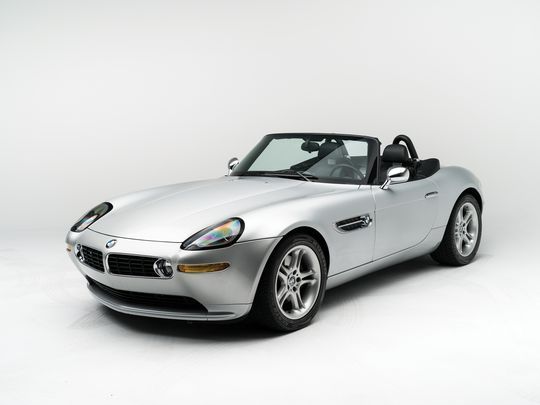 Steve Jobs bought this BMW Z8 — designed by Henrik Fisker — new in 2000. It’s now selling for triple its original price
Steve Jobs bought this BMW Z8 — designed by Henrik Fisker — new in 2000. It’s now selling for triple its original price
But Fisker is eager to talk about how he is hiding an array of LiDAR sensors — which help a self-driving car’s computer “see” the road — throughout the car’s lithe body. Typically, LiDAR and other such sensors protrude angrily from roof-mounted racks.
“In the early days of the automobile, the front of the car was designed around the radiator,” says Fisker, who is displaying the EMotion at LiDAR-maker Quanergy’s stand at CES. “So we’ve embedded ours in the front, as if to signal this new era, while the others are nestled near the four wheels.”
Fisker says he hasn’t decided if the LiDAR suite will be standard or an option yet. “Autonomous driving is exciting but I don’t think it’s a deal-breaker. It’ll be more like cruise control, used in stop-and-go traffic,” he says, essentially describing the tech that already exists in Teslas and a few other high end cars.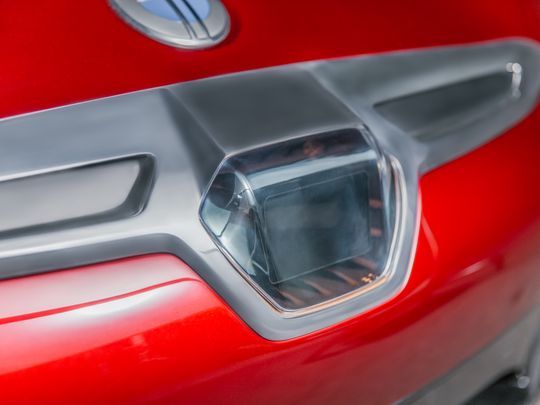 The Fisker EMotion electric car will likely feature an array of (possibly optional) LiDAR sensors, which help a self-driving car “see” the road. Fisker has hidden the prime LiDAR unit in the nose of the vehicle, far more discreet a location that the roof mounted LiDAR one typically sees
The Fisker EMotion electric car will likely feature an array of (possibly optional) LiDAR sensors, which help a self-driving car “see” the road. Fisker has hidden the prime LiDAR unit in the nose of the vehicle, far more discreet a location that the roof mounted LiDAR one typically sees
One thing is certain. If Fisker starts building EMotions in 2019, he will have polished CES’ somewhat tarnished reputation for showcasing high-tech prototypes that never make it to consumer garages. Consider that Faraday Future hosted two big extravaganzas at CES in 2016 and 2017 but has yet to sell a car.
Fisker is well aware of the mountain he faces.
“To build a car company is very difficult,” he says. “But there’s an excited feeling in the investment community that this is the Wild West and everyone’s looking for gold mines. It’s worth chasing.”
courtesy= .usatoday.com

